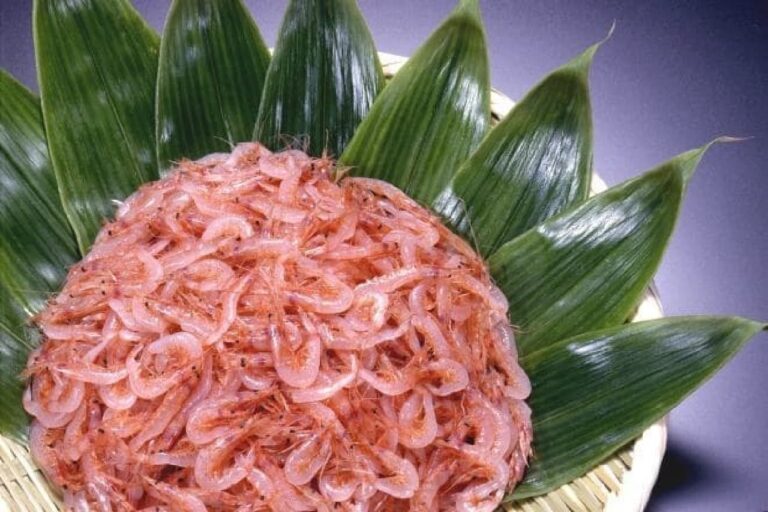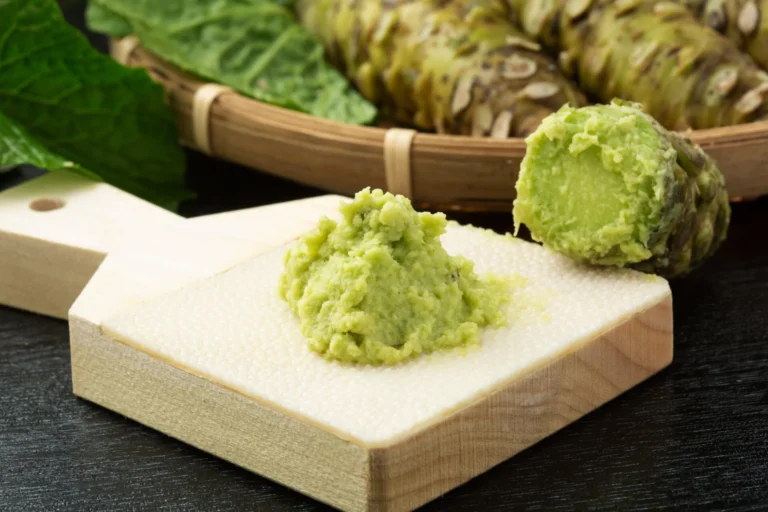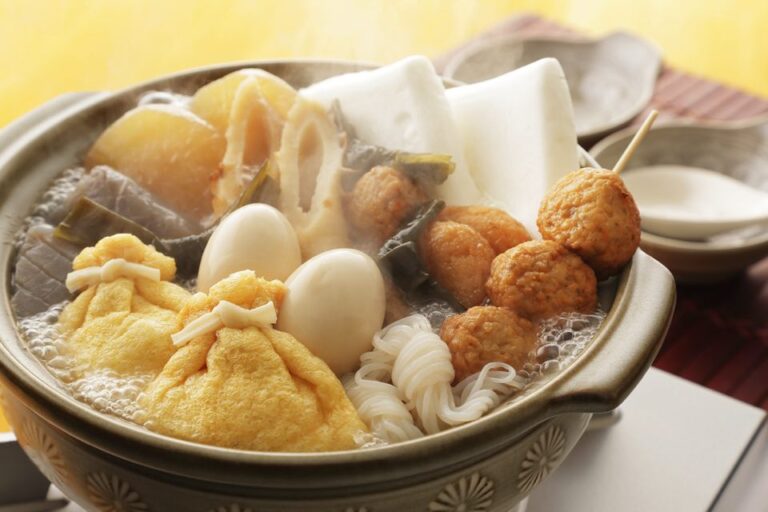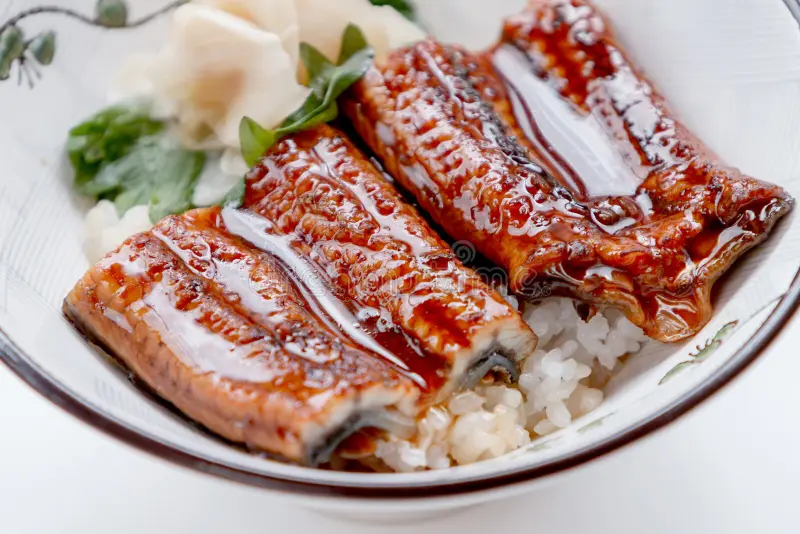Shizuoka's Famous Foods
Sakura Shrimp

Sakura shrimp, a delicacy synonymous with Shizuoka Prefecture, embodies the essence of spring in Japan both in its vivid color and delicate flavor. Harvested from the depths of Suruga Bay, these tiny, translucent shrimp are celebrated for their unique sweetness and slightly salty taste, reminiscent of the cherry blossoms they are named after. The shrimp are so integral to the local cuisine and culture that they have become a symbol of Shizuoka, featured prominently in a variety of dishes that showcase their versatility. From being served simply boiled to being dried and used as a crunchy topping for rice bowls and salads, Sakura shrimp are a testament to the region’s rich maritime heritage and culinary creativity.
The practice of harvesting Sakura shrimp is steeped in tradition, with fishing methods passed down through generations, ensuring sustainable catch each spring and autumn, the seasons when the shrimp are at their most abundant. The sight of the fishing fleet’s lights twinkling on Suruga Bay during the night is as much a part of the local landscape as the iconic Mt. Fuji. In the kitchen, Sakura shrimp are used to add depth and flavor to soups, omelets, and even traditional Japanese sweets, making them a versatile ingredient that captures the essence of Shizuoka’s culinary spirit. Their enduring popularity not only celebrates the bounty of the local waters but also highlights the community’s deep respect for nature and the seasonal rhythms that dictate life in this coastal prefecture.
Wasabi

Wasabi, the pungent green condiment that is synonymous with Japanese cuisine, finds its finest expression in the verdant fields of Shizuoka Prefecture. Known across Japan for its superior quality, Shizuoka’s wasabi benefits from the region’s pristine river waters, which flow from the Southern Alps, creating the ideal conditions for cultivating this demanding crop. The clear, cold water and the natural filtration through volcanic soil in the Izu Peninsula and other parts of Shizuoka contribute to producing wasabi with a more vibrant taste and a smoother texture compared to those grown elsewhere. This distinct quality has elevated Shizuoka wasabi to the epitome of flavor, making it a sought-after ingredient among chefs and food enthusiasts worldwide.
While wasabi is a common feature in Japanese dishes across the nation, the wasabi grown in Shizuoka is celebrated for its unique combination of fiery heat and delicate sweetness, offering a depth of flavor unmatched by its counterparts. It is an essential accompaniment to sushi and sashimi, enhancing the taste of the fish with its natural zing. Beyond its role in traditional dishes, Shizuoka wasabi is also incorporated into innovative recipes, from wasabi-infused dressings and sauces to wasabi-flavored snacks and even ice cream, showcasing its versatility. The reputation of Shizuoka as the premier wasabi-producing region not only underscores the prefecture’s rich agricultural heritage but also its contribution to the culinary identity of Japan, where the appreciation of wasabi’s nuanced flavor is an art in itself.
Shizuoka Oden (Japanese Stew)

Shizuoka Oden stands as a beloved variant of the classic Japanese winter dish known for bringing warmth and comfort during the cooler months. Oden, at its core, is a savory stew that combines a variety of ingredients such as boiled eggs, daikon radish, konnyaku (a gelatinous food made from konjac yam), and various processed fish cakes and balls, all simmered in a light, soy-flavored dashi broth. Each region in Japan adds its unique twist to oden, and Shizuoka’s version is particularly distinctive, characterized by its dark, rich broth and the addition of a local specialty, black hanpen – a fluffy fish cake made from ground fish and yam.
What sets Shizuoka Oden apart is not just its unique ingredients but also the deep, almost caramel-like flavor of its broth, achieved through a generous use of soy sauce and a secret blend of spices. This gives the dish an umami-packed profile that is robust yet comforting. Shizuoka Oden is traditionally served with a sprinkling of green laver (a type of seaweed) and accompanied by a strong mustard that cuts through the richness of the broth, enhancing the flavors of the ingredients. It’s commonly enjoyed at specialty oden pubs, where patrons can select their preferred ingredients from a simmering pot, making it a social and interactive dining experience. Shizuoka Oden is not only a testament to the prefecture’s culinary innovation but also a warm invitation to explore the depth of Japan’s regional cuisines, offering a comforting, flavorful embrace that captivates both locals and visitors alike.
Shizuoka Unadon (Freshwater Eel on Rice)

Unadon, short for “unagi donburi,” is a beloved Japanese dish that presents a delectable combination of grilled eel served over a bed of steaming white rice. This dish is celebrated for its simplicity and the exquisite flavor of the eel, which is glazed with a sweet soy-based sauce before being grilled to perfection. The sauce, typically a mixture of soy sauce, mirin, sugar, and sake, caramelizes under the grill, enveloping the eel in a glossy, flavorful coating that is both sweet and savory. Unadon stands out in the culinary landscape for its straightforward presentation and the singular focus on the eel’s flavor, making it distinct from other eel dishes like Hitsumabushi, where the eel is served with rice in a more elaborate ceremonial manner, often enjoyed in multiple steps with varying condiments.
In the Tokai region, particularly in areas like Shizuoka, Aichi (home to Nagoya), and Gifu, unagi (freshwater eel) is more than just an ingredient; it’s a staple that epitomizes the culinary richness of the region. While Unadon offers a direct, unembellished appreciation of unagi, allowing the quality of the fish and the mastery of its preparation to shine through, Hitsumabushi invites diners to experience unagi in a variety of textures and flavors, from eating it plain to enjoying it with broth or condiments. The distinction between Unadon and Hitsumabushi, therefore, lies not just in the method of serving but in the culinary journey they offer. Unadon is celebrated for its comforting uniformity, a dish where the succulent, flavorful eel takes center stage, embodying the Tokai region’s enduring love affair with this luxurious ingredient.
Hamamatsu Gyoza

Hamamatsu Gyoza distinguishes itself within the diverse world of Japanese gyoza (dumplings) by offering a unique twist that encapsulates the culinary spirit of Hamamatsu City in Shizuoka Prefecture. Unlike the more widely known varieties of gyoza, which are typically filled with a mixture of ground pork, cabbage, garlic, ginger, and soy sauce, Hamamatsu Gyoza incorporates a generous amount of cabbage, lending a distinctive sweetness and crunch to the filling. Furthermore, what sets these dumplings apart is the way they are served – alongside a rich, flavorful broth, turning the experience into a more substantial meal rather than just a side dish or appetizer.
The preparation of Hamamatsu Gyoza involves careful attention to detail, from the seasoning of the filling to the skillful wrapping and pan-frying process that ensures a crispy bottom while keeping the top tender and juicy. The accompanying broth, often a clear, umami-packed soup, not only complements the gyoza’s flavors but also highlights the culinary traditions of the region, which value the harmony of ingredients and the balance of tastes. This method of serving gyoza with broth is relatively unique to Hamamatsu and has contributed to the city’s reputation as a destination for gyoza enthusiasts. The popularity of Hamamatsu Gyoza reflects the broader appreciation for gyoza in Japan, where regional variations showcase local preferences and innovations, making it a beloved dish across the country with a special place in the hearts of those in Hamamatsu.